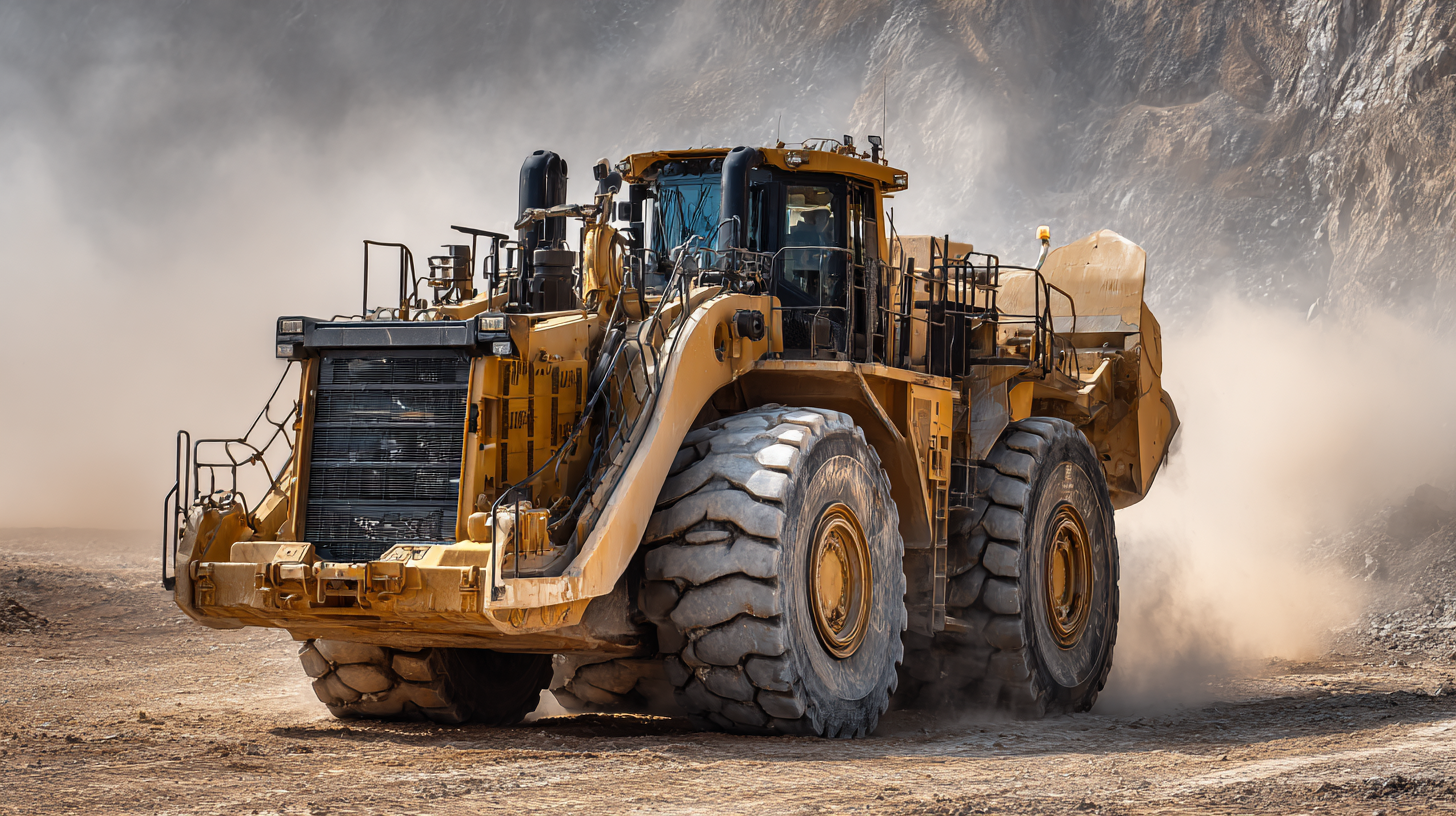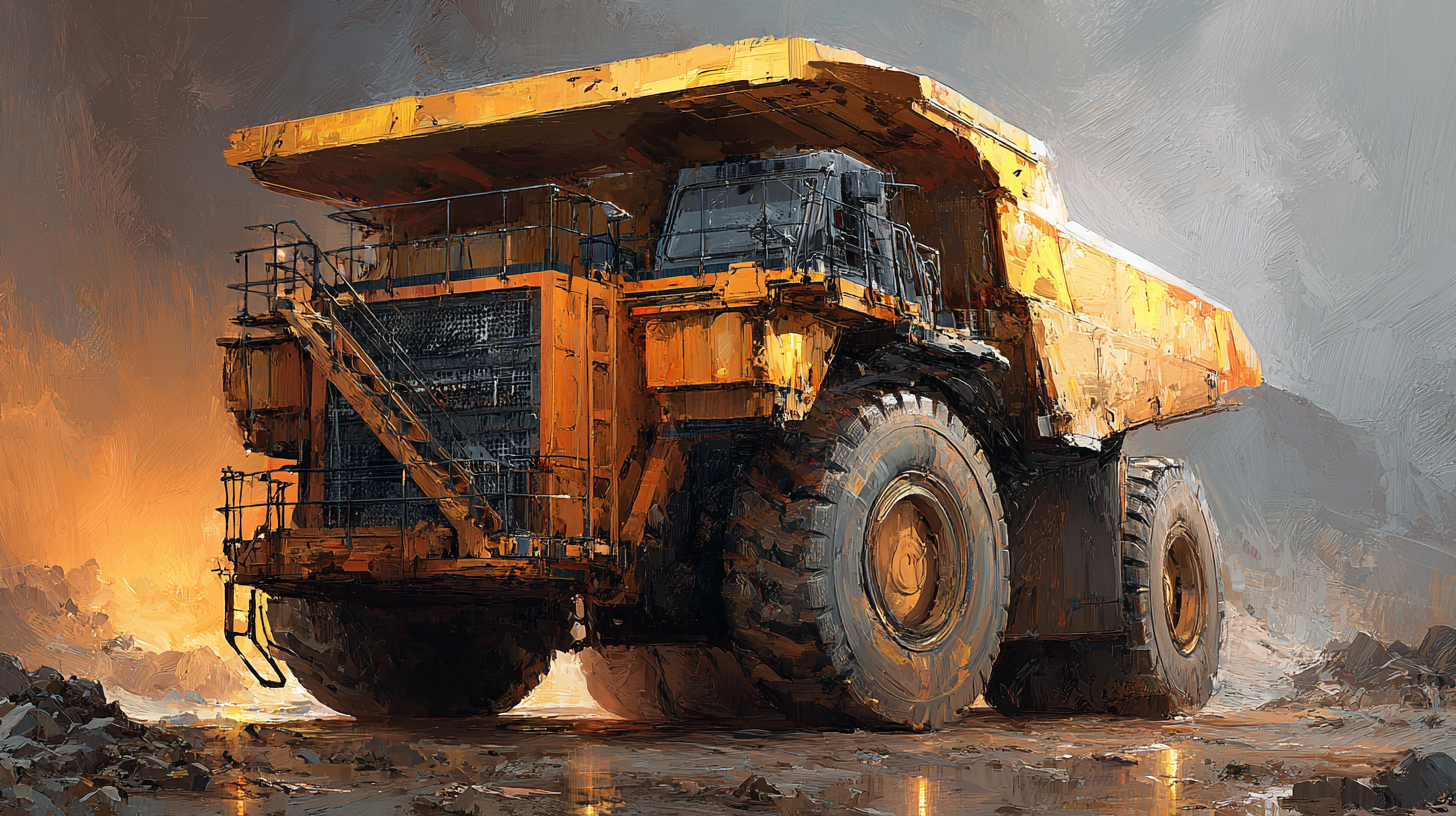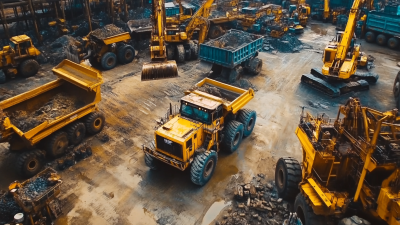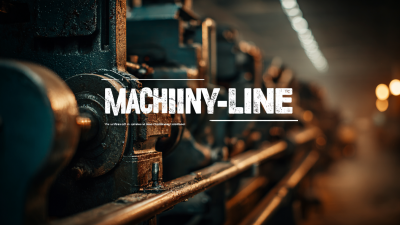Leave Your Message
- Phone
- E-mail
- Whatsapp
As we look ahead to 2025, the heavy equipment industry is poised for transformative innovations that promise to enhance efficiency, safety, and sustainability in construction, mining, and related sectors. The integration of cutting-edge technologies is reshaping how heavy equipment operates, making it not only more powerful but also more intelligent. From advancements in automation and artificial intelligence to the adoption of eco-friendly machinery, these innovations are set to redefine operational standards in ways that were once considered futuristic.

The growing emphasis on productivity and safety will drive the development of smart heavy equipment equipped with advanced sensors and connectivity features, enabling real-time data analysis and decision-making. Additionally, a commitment to environmental sustainability will spur machinery manufacturers to invest in greener technologies, such as electric and hybrid equipment. As we explore the top 10 heavy equipment innovations to watch in 2025, we will uncover how these technological advancements will pave the way for a more efficient and sustainable future in the heavy equipment sector.
The construction industry is on the brink of a technological transformation with the rise of revolutionary autonomous machinery. According to a recent report from Markets and Markets, the global construction equipment market is expected to grow from $145.4 billion in 2020 to $265.5 billion by 2025, with a significant portion of this growth driven by advancements in automation. These innovative machines are designed to enhance efficiency and safety on construction sites, reducing human error and streamlining operations.
Autonomous machinery, such as self-driving excavators and bulldozers, can complete tasks with remarkable precision and minimal supervision. A study by McKinsey suggests that automating construction tasks could increase productivity by up to 20%-25%. By leveraging AI and machine learning, these machines not only execute day-to-day functions but also adapt to their environments. As these technologies gain traction, contractors will need to invest in training systems to ensure workers can effectively collaborate with these machines.
Tips: To maximize the benefits of autonomous machinery, companies should focus on integrating smart technologies with existing systems. Investing in workforce training will also be crucial, enabling employees to transition smoothly into a more automated workflow. Additionally, maintaining an innovative mindset is essential for embracing these changes and harnessing the full potential of emerging technologies.
| Innovation | Description | Expected Impact | Applications |
|---|---|---|---|
| Autonomous Excavators | Self-operating excavators that use AI for navigation and operation. | Increased efficiency, reduced labor costs. | Earthmoving, site preparation. |
| Drones for Site Surveying | Drones equipped with high-resolution cameras for surveying. | Faster data collection, improved accuracy. | Land measurement, progress tracking. |
| Smart Wearables | Wearable technology that monitors worker health and safety. | Enhanced safety, reduced incidents. | Site management, safety compliance. |
| Telematics for Fleet Management | Real-time tracking and diagnostics of heavy machinery. | Lower operational costs, better maintenance. | Fleet monitoring, optimization. |
| Electric Construction Equipment | Battery-powered machinery reducing fossil fuel dependency. | Lower emissions, reduced fuel costs. | Urban construction, demolition. |
| Augmented Reality (AR) for Training | AR tools for improving worker training and safety. | Faster learning, enhanced retention. | Skill development, onboarding. |
| 3D Printing in Construction | Using 3D printing technology to create building components. | Reduced material waste, faster construction times. | Building design, prototypes. |
| Advanced Robotics | Robots for tasks such as welding and assembly on sites. | Higher precision, less manual labor. | Manufacturing, assembly. |
| AI-Powered Project Management | AI tools for optimizing project planning and resource allocation. | More efficient workflows, better risk management. | Project management, forecasting. |
As the heavy equipment industry advances towards 2025, advanced sensor technology is set to redefine safety and efficiency on construction sites. Modern machinery is increasingly equipped with a variety of sensors that monitor operating conditions in real time. These sensors can detect potential hazards, such as obstacles or personnel in close proximity, dramatically reducing the risk of accidents. Through integration with artificial intelligence, these systems can analyze data instantly, allowing for proactive measures to be implemented, thereby creating a safer working environment.

Moreover, sensor technology enhances operational efficiency by providing valuable insights into equipment performance. For instance, sensors can track fuel consumption, engine temperature, and wear and tear on components, enabling predictive maintenance. This not only minimizes downtime but also optimizes resource allocation and reduces costs. With the ability to gather and analyze vast amounts of data, heavy equipment operators can make informed decisions, ensuring that machinery performs at peak efficiency while adhering to safety regulations. The ongoing development of these technologies promises to lead the industry toward a future where safety and productivity go hand in hand.
As the heavy equipment industry moves towards a more sustainable future, eco-friendly innovations are taking center stage. With growing environmental concerns, manufacturers are increasingly incorporating sustainable practices in their designs. This includes the development of machinery powered by alternative energy sources, such as electric or hybrid systems, which significantly reduce carbon emissions. Moreover, advancements in battery technology are enhancing the efficiency of these electric machines, making them a viable option for heavy-duty tasks.
When considering eco-friendly heavy equipment, it's essential to prioritize machines that use renewable resources. Look for options that offer features such as energy-efficient engines and regenerative braking systems. Additionally, consider renting equipment instead of purchasing, as this can reduce the need for new machinery, thus minimizing waste.
Utilizing telematics and data analytics can also optimize the usage of equipment, helping companies to lower fuel consumption and extend the lifespan of their machines. Regular maintenance checks can further ensure that these innovations perform at their best while adhering to sustainable practices. By embracing these innovations, the industry can pave the way for a greener future while maintaining operational efficiency.
The rise of IoT in heavy machinery is set to revolutionize the construction sector significantly. With the global IoT in manufacturing market projected to grow from $116.52 billion in 2024 to $141.18 billion in 2025, the integration of IoT technologies is becoming essential for enhancing operational efficiency. The IoT in construction market alone is expected to reach USD 72.1 billion, surging at a compound annual growth rate (CAGR) of 14.1% during this same period. This growth underscores the increasing focus on smart connectivity, allowing equipment to communicate seamlessly and share data in real-time.

Key opportunities lie in optimizing resources and improving safety and sustainability through IoT. By connecting construction machinery and tools, companies can enhance project delivery and decision-making. As more organizations, including those in heavy engineering, begin to embrace these technologies, the shift towards smart, connected, and safety-focused machinery will reshape construction operations. This trend signifies a critical transformation, making smart equipment not just an advantage but a necessity in a highly competitive landscape.
The heavy equipment industry is on the brink of a transformation, powered by next-generation electric and hybrid solutions. These advanced power sources promise to enhance efficiency while significantly reducing carbon emissions, marking a crucial step towards sustainability in construction, mining, and agriculture. As battery technology continues to evolve, manufacturers are poised to introduce electric machinery that not only performs akin to traditional diesel-powered equipment but also offers quiet operation and lower maintenance costs.
Hybrid solutions are also gaining traction, combining the power of conventional engines with electric drivetrains. This approach allows for increased versatility and extended operational range, making it ideal for heavy-duty tasks that demand high power but also benefit from the efficiency of electric motors. As operators become more environmentally conscious and regulatory pressures mount, these innovative power sources are set to redefine industry standards in performance, sustainability, and cost-effectiveness, paving the way for a greener future in heavy machinery.






